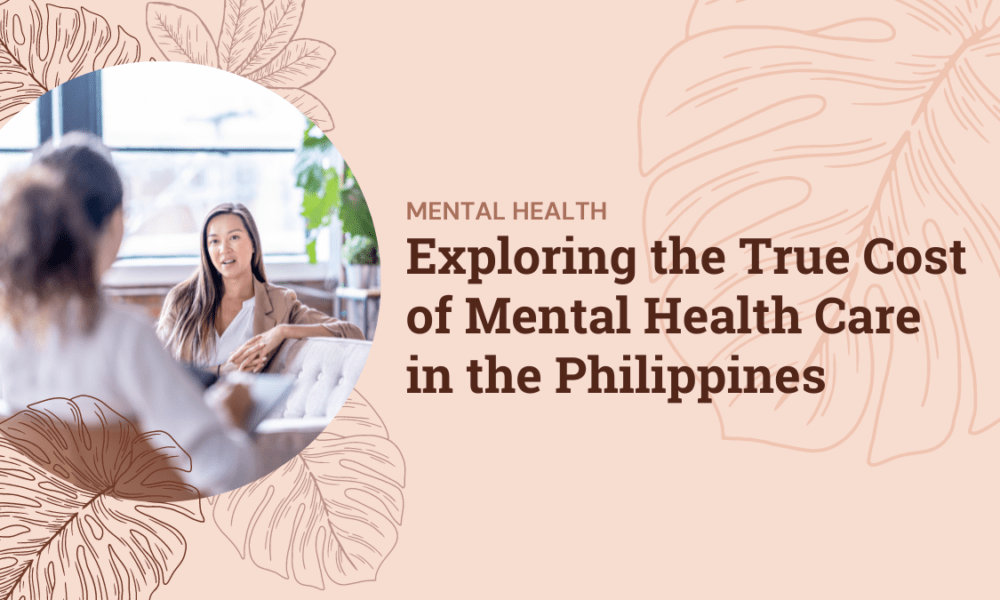Table of Contents
- The Price of Mental Wellness in Numbers
- Why Mental Health Care Costs So Much
- Navigating the Challenges in ADHD Awareness
- Mental Health Care as an Investment, Not Just an Expense
- Finding Affordable Mental Health Support
- Addressing ADHD Treatment Misconceptions
- Policy Changes Creating New Possibilities
- The Path Forward
- Beyond Economics
- Frequently Asked Questions
We live in a time of unprecedented awareness about mental health in the Philippines. Conversations about depression, anxiety, and other conditions have moved from whispered concerns to public discourse. Yet the cost of mental health care in the Philippines creates a harsh reality for many Filipinos, as treatment remains financially out of reach despite growing recognition of its importance.
The numbers tell a troubling story.
With only about 700 psychiatrists serving a population of over 110 million, the Philippines faces one of the most severe mental health resource shortages in Southeast Asia. Approximately 6 million Filipinos live with depression and anxiety, creating a supply-demand imbalance that manifests primarily as an economic barrier.
This economic wall separating Filipinos from mental health care doesn’t just affect those with diagnosed conditions—it prevents diagnosis itself. The financial barriers create a cycle where conditions worsen, ultimately costing individuals, families, and the national economy far more than early intervention would have required.
The Price of Mental Wellness in Numbers
Mental health treatment in the Philippines comes with costs that many families simply cannot bear:
- Therapy sessions typically range from ₱1,000 to ₱4,500 per hour—with most practitioners recommending weekly sessions for at least several months.
- Initial psychiatric evaluations start between ₱2,000 and ₱8,500.
- Medications add another layer of ongoing expenses, with many psychiatric medications costing between ₱1,500 and ₱5,000 monthly.
These figures represent significant portions of monthly income for most Filipino families. When the median family income hovers around ₱25,000 monthly, spending ₱4,000 weekly on therapy becomes mathematically impossible for many.
Beyond the visible costs lie additional financial burdens. Transportation to distant clinics, time away from work, and what mental health advocates call the “ADHD tax“—the hidden costs of conditions through missed payments, impulsive spending, and productivity losses—compound the financial strain.
A schoolteacher from Quezon Province captured this reality: “I know I need help, but choosing between therapy and my children’s education isn’t really a choice at all.”
Why Mental Health Care Costs So Much

The high cost of mental health services in the Philippines stems from several interconnected factors, creating what economists might call a “perfect storm” of inaccessibility:
Professional scarcity represents the most fundamental driver. With approximately three mental health professionals per 100,000 Filipinos (compared to the WHO recommendation of at least 10 per 100,000), basic supply and demand economics push prices upward. Most professionals concentrate in urban centers, further limiting accessibility in provinces. Government funding, while recently increased from 57 million to 1 billion pesos, remains insufficient to meet national needs. This underfunding creates a dependency on private practice models, where costs transfer directly to patients.
Insurance coverage has historically excluded or severely limited mental health benefits. While recent PhilHealth expansions represent progress, implementation gaps and coverage limitations persist, leaving many to pay out-of-pocket. Persistent stigma around mental health conditions also plays an economic role. Lower service utilization due to stigma creates a market where providers must charge more per patient to maintain viable practices. Many Filipinos delay seeking help until conditions worsen, requiring more intensive and expensive interventions.
Navigating the Challenges in ADHD Awareness
Among the many mental health conditions facing Filipinos, ADHD presents unique challenges in awareness and accessibility. The challenges in ADHD awareness stem not only from economic barriers but also from widespread misconceptions about the condition itself.
Many families struggle to recognize ADHD symptoms, often mistaking them for behavioral problems or lack of discipline. This delayed recognition means many individuals only seek help when academic or workplace difficulties become severe, leading to more costly interventions and remediation.
The economic impact becomes particularly pronounced with ADHD, as proper management often requires a multimodal approach including:
- Regular therapy sessions
- Potential medication management
- Educational accommodations
- Family support systems
When families finally overcome awareness barriers and seek help, they often encounter ADHD treatment misconceptions that further complicate access to appropriate care. These misconceptions range from beliefs that ADHD is simply a childhood condition to fears that medication is the only treatment option.

Mental Health Care as an Investment, Not Just an Expense
We often frame mental health care purely as a cost, but this perspective misses the broader economic picture. Treating mental health conditions represents an investment with significant returns for individuals, families, and society.
Early intervention typically costs far less than treating advanced conditions. A single outpatient consultation costs a fraction of what hospitalization for severe depression or psychosis requires. The “ADHD tax” diminishes when conditions are properly managed, improving financial stability over time.
On a societal level, the economic benefits extend further. Improved workforce productivity, reduced absenteeism, decreased burden on the healthcare system for physical conditions exacerbated by mental health issues, and stronger family stability all represent economic returns on mental health investments.
A recent World Health Organization study found that for every $1 invested in scaled-up treatment for common mental disorders, there is a return of $4 in improved health and productivity. While Philippines-specific data remains limited, global patterns suggest similar returns would apply locally.
Finding Affordable Mental Health Support
Despite the significant barriers, pathways to more affordable mental health care do exist for Filipinos:
Public health centers increasingly incorporate mental health services, though availability varies widely by location. The National Center for Mental Health offers outpatient services at significantly reduced rates compared to private practice. Non-profit organizations like the Philippine Mental Health Association provide services on sliding fee scales based on income. University-based clinics, particularly at UP Diliman, Ateneo, and UST, offer lower-cost services through their psychology departments, though wait times can be lengthy.
Telemedicine has emerged as a cost-reduction tool, eliminating transportation expenses and sometimes offering lower session rates. Platforms like KonsultaMD now include mental health services with subscription models that reduce per-session costs. Digital resources, while not replacing professional care, can supplement treatment or provide entry points. Mental health apps like MindDoc offer some functionality for free or at lower cost than traditional therapy. Online communities and support groups create spaces for connection without financial barriers.
Religious organizations increasingly recognize their role in mental health support. Many churches now offer counseling services at minimal or no cost, though the focus and approach vary considerably.

Addressing ADHD Treatment Misconceptions
For conditions like ADHD, addressing treatment misconceptions becomes crucial to improving accessibility. Common ADHD treatment misconceptions include:
- Medication is the only effective treatment: While medication can be helpful for many, comprehensive ADHD treatment typically involves behavioral strategies, educational support, and therapy approaches tailored to individual needs.
- ADHD only affects children: Many adults with ADHD remain undiagnosed in the Philippines due to the misconception that it’s exclusively a childhood condition. Adult ADHD treatment requires specialized approaches that remain limited in availability.
- ADHD treatment is unaffordable: While comprehensive treatment can be costly, tiered approaches exist where families can begin with the most accessible interventions and gradually incorporate others as resources allow.
Organizations like ADHD Philippines work to combat these misconceptions through community education and advocacy, though their reach remains limited by resource constraints.
Policy Changes Creating New Possibilities
Recent policy developments suggest a system in transition. While gaps remain substantial, several changes warrant attention:
The Mental Health Act (Republic Act 11036), passed in 2018, established a policy framework that continues to evolve. The 2024-2028 Philippine Council for Mental Health Strategic Framework now explicitly addresses economic accessibility as a priority area.
PhilHealth has expanded mental health benefit packages, now covering both inpatient and outpatient services for specified conditions. While implementation remains inconsistent, this policy shift represents significant progress from previous years when mental health coverage was nearly nonexistent. Educational institutions have begun integrating mental health within their healthcare systems. Several universities now include mental health services within student healthcare fees, creating models that could expand to other institutional settings.
Workplace mental health programs have gained traction, with more companies offering employee assistance programs that include counseling services. These programs effectively distribute costs across organizations rather than burdening individuals.
The Path Forward
The economic barriers to mental health care in the Philippines reflect a system misaligned with population needs. While individual workarounds and grassroots solutions provide important relief, sustainable change requires systemic transformation.
Increasing the supply of mental health professionals remains fundamental. This requires not just more training programs but also incentives for practicing in underserved areas. Models like the Doctors to the Barrios program could be adapted specifically for mental health professionals. Insurance reform must continue beyond recent initial steps. Mental health parity—requiring insurance to cover mental and physical health equally—would dramatically reduce out-of-pocket expenses for many Filipinos.
Creative delivery models hold particular promise. Hub-and-spoke systems where psychiatrists supervise multiple non-physician providers can stretch specialized resources further. Digital platforms can reduce overhead costs while extending geographical reach. Community-based approaches, particularly those that integrate mental health into existing primary care, represent some of the most cost-effective interventions. The WHO-recommended task-sharing model, where community health workers receive basic mental health training, has shown success in other resource-constrained environments.
Beyond Economics
While this analysis focuses on economic barriers, we recognize that financial accessibility represents just one dimension of the mental health care challenge in the Philippines. Cultural factors, geographic distribution, education gaps, and quality concerns all require parallel attention.
What becomes clear from examining the economic landscape is that mental health care in the Philippines remains in transition—neither wholly inaccessible nor adequately available. The gap between growing awareness and economic accessibility creates both tension and opportunity.
For now, many Filipinos navigate a patchwork system, cobbling together support through a combination of formal and informal resources. The financial barriers remain substantial, but pathways through and around them continue to emerge. Mental health care may carry a heavy price tag in the Philippines, but its value exceeds any financial calculation. The question facing us isn’t whether we can afford mental health care—but whether we can afford its absence.
Key Takeaways:
- The cost of mental health care in the Philippines remains prohibitively high for most families, with therapy sessions ranging from ₱1,000 to ₱4,500 per hour.
- Mental health conditions like ADHD face both economic barriers and widespread misconceptions about proper treatment approaches.
- Recent policy changes through the Mental Health Act and expanded PhilHealth coverage offer promising pathways to more accessible care.
Frequently Asked Questions
How much does therapy typically cost in the Philippines?
Therapy sessions range from ₱1,000 to ₱4,500 per hour, with most practitioners recommending weekly sessions for at least several months.
Does PhilHealth cover mental health treatments?
Yes, PhilHealth now covers both inpatient and outpatient mental health services for specified conditions, though implementation remains inconsistent across healthcare providers.
Where can I find affordable ADHD assessment in the Philippines?
University-based clinics at UP Diliman, Ateneo, and UST offer lower-cost ADHD assessments, though wait times may be lengthy.
Maria is an accomplished digital marketing professional, specializing in content marketing and SEO. She's a neurodivergent who strives to raise awareness, and overcome the stigma that envelopes around mental health.





No Comment! Be the first one.